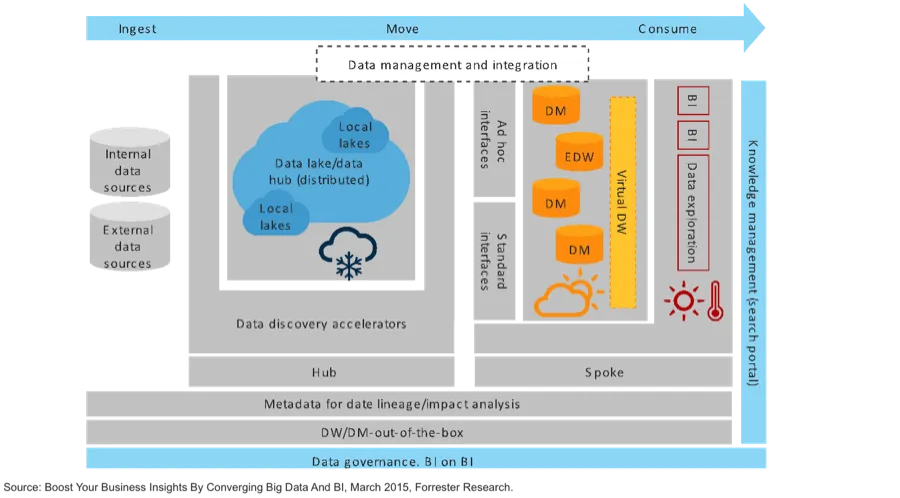The Democratization of Data: Empowering Everyone in Your Organization with Analytics
Blog: The Tibco Blog
At this stage in the development of business intelligence (BI) and big data, one may begin to yawn. If you use analytics, you probably know all about the 5 V’s of big data: volume, velocity, variety, veracity, and value. What you are thinking, though, is that despite all the available data and information, there’s still a lot that’s unknown. In spite of the technological advances since the early BI tools and the improvements in data storage, access and delivery, something is still missing.
New tools and innovative platforms, capable of handling the ever-exploding volume and variety of data, are rapidly replacing old BI tools built on SQL and OLAP. Agile BI, the most recent development in the world of BI, is causing a shift in decision-making—from ones historically made by IT about platform, architecture and BI tools—to those made by people who actually need and use the applications. Business requirements are (finally) becoming more important; businesses need to learn more about consumer behavior in order to sell products, which it does by analyzing data. In a consumer-driven economy, it is imperative that data be delivered as fast as possible in an easily and quickly understood format. Self-service analytics are exploding, leading to the democratization of data. A system capable of supporting these tools and making use of their full potential is required.
In a recent Forrester report, (It’s Time to Upgrade Business Intelligence to Systems of Insight, Forrester Research, Inc., July 2015), Boris Evelson, VP and Principal Analyst at Forrester Research, proposes an alternative to the older, IT-driven development model, called “Systems of Insight.” The basic idea is that systems of insight are neither built from the bottom up (the data warehouse comes first, followed by the tools needed to interpret what is stored therein) nor from the top down, but are driven solely by business requirements – a strategy, Evelson says, will “…. combine both into a new and winning approach….”. Systems of Insight represent the convergence of agile BI and big data into a single architecture. Each has come a long way, but by playing together, they become greater than the sum of their parts.

How does one begin to develop Systems of Insight? Evelson suggests implementing a three-tiered, hub-and-spoke architecture, in which data is centrally staged in a “data lake” or data hub, with minimal governance. In the center of the process are the “spokes”, where data quality and master data management policies are applied, and integration occurs.
On the application side, easily accessed, in-memory data gives users more choices. They are no longer limited to accessing a subset of their data to make decisions, but instead have access to the data they need to engage in real-time, exploratory analyses, from which unique and often valuable insights are born. Other pieces required to convert early BI applications into Systems of Insight include:
- Embedding pervasive BI into everyday transactional operations. If embedded, BI now carries context and moves analysis from answering only questions that are known in advance to suggesting correlations—and explorations—that would otherwise go unnoticed.
- Creating a feedback loop, enabling learning and improvement.
- Integrating transactional and operational metadata.
- Integrating BI with business process management, workflow apps, etc., providing users with results they can respond to with executable actions.
As a forerunner in the democratization of data, TIBCO Spotfire architecture demonstrates many of the attributes required to develop Systems of Insight.
For additional recommendations and details on building your own Systems of Insight, download “It’s Time to Upgrade Business Intelligence to Systems of Insight”.
For even more insight, view the TIBCO webinar featuring Boris Evelson titled: “Next Gen Analytics: Strategies for Building Systems of Insight